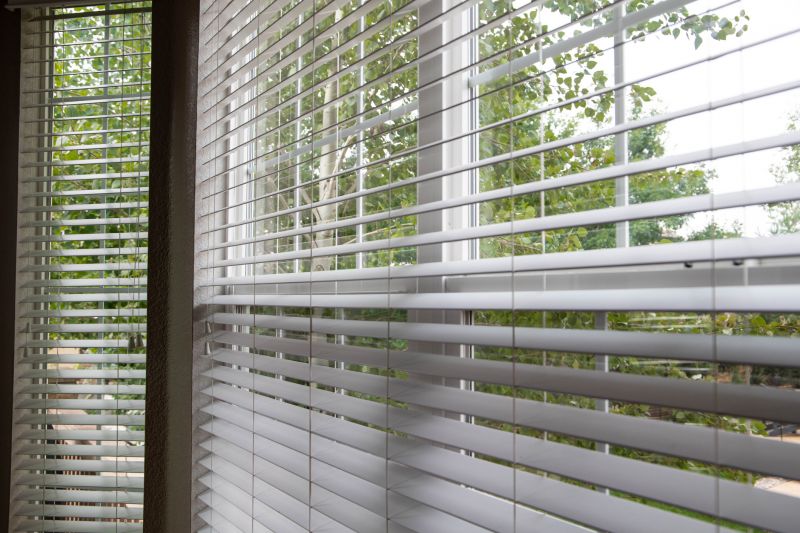Leading Outdoor Blinds Installation Products for a Stylish Outdoor Space
Explore high-quality products that combine functionality and style to elevate your outdoor living area with ease.
 Outdoor blinds are versatile solutions that enhance privacy, control sunlight, and add aesthetic appeal to various outdoor spaces such as patios, decks, and pergolas. These installations come in a wide array of styles, materials, and mechanisms, allowing homeowners and designers to select options that best suit their specific needs and preferences. From manual pull-down shades to motorized systems, outdoor blinds can be customized for different levels of convenience and functionality.
Outdoor blinds are versatile solutions that enhance privacy, control sunlight, and add aesthetic appeal to various outdoor spaces such as patios, decks, and pergolas. These installations come in a wide array of styles, materials, and mechanisms, allowing homeowners and designers to select options that best suit their specific needs and preferences. From manual pull-down shades to motorized systems, outdoor blinds can be customized for different levels of convenience and functionality.
Top Overall Option
Retractable Outdoor Blinds System
A versatile retractable outdoor blinds system offers flexible coverage and easy operation, making it suitable for various outdoor spaces. These systems typically feature durable fabrics or materials that can be extended or retracted as needed, providing shade or privacy on demand. Many models include manual or motorized options, allowing for seamless control. Their adaptability makes them a popular choice for patios, pergolas, and decks, enhancing usability and aesthetic appeal while offering straightforward installation and maintenance.
Types of Products For Outdoor Blinds Installations
Manual Pull-Down Shades
Simple and cost-effective, these shades are operated by pulling a cord or chain, suitable for smaller outdoor areas.
Motorized Roller Blinds
Operated via remote control or smart home systems, offering convenient adjustment and modern aesthetics.
Side Channel Blinds
Designed with side tracks to prevent wind from billowing, ideal for windy locations.
PVC Outdoor Curtains
Made from transparent or tinted PVC fabric, these curtains provide weather resistance and clear views.
Aluminum Louvered Blinds
Horizontal slats that can be tilted for light and airflow control, offering a modern look.
Shade Sail Systems
Flexible fabric sails that can be installed in various configurations to provide shade over large areas.
Bamboo and Reed Blinds
Natural materials that add a tropical or rustic aesthetic while providing filtered shade.
Zip Track Screens
Vertical screens that zip into place, offering wind and privacy control with a sleek appearance.
Awnings with Retractable Arms
Extendable fabric or metal awnings that can be retracted when not in use, suitable for patios.
Outdoor Fabric Curtains
Heavy-duty fabric curtains that can be tied back or closed for privacy and sun protection.
Popular Choices
Flexible and adaptable, these systems are gaining popularity for their ease of use and versatility.
Offering remote control convenience, these shades are increasingly favored for modern outdoor spaces.
Clear PVC curtains are popular for maintaining views while providing weather protection.
Natural and stylish, these blinds are trending for adding a rustic touch to outdoor areas.
Effective in windy conditions, these are commonly chosen for their stability and privacy features.
Popular for large outdoor spaces, shade sails provide customizable coverage with a modern aesthetic.
Louvered panels are favored for their durability and adjustable airflow and light control.
Retractable awnings are frequently selected for their convenience and ability to extend or retract as needed.
Tough fabric curtains are trending for providing privacy and sun protection with a stylish look.
Vertical zip screens are becoming popular for their wind resistance and sleek appearance.
Choosing the right outdoor blinds involves considering factors such as durability, ease of installation, and the level of light or privacy control desired. Materials like weather-resistant fabrics, aluminum, or PVC are common, each offering different benefits in terms of maintenance and longevity. Proper installation not only ensures optimal performance but also enhances the overall appearance of the outdoor space.
The installation process generally involves mounting brackets, tracks, or cables that support the blinds, and can often be tailored to fit various architectural styles. Some systems include additional features like side channels to prevent wind from billowing the fabric, or integrated insect screens for added comfort. It is important to select products that are compatible with the structural elements of the space and that can withstand local weather conditions.
Maintenance and operation are also key considerations. Motorized options provide remote control convenience, while manual systems might be preferred for simplicity and cost-effectiveness. Regular cleaning and inspection can prolong the lifespan of outdoor blinds, ensuring they continue to perform well over time. Whether for residential or commercial applications, the right outdoor blinds can significantly enhance outdoor living experiences while providing practical benefits.
Key Buying Considerations
- Material durability and weather resistance to ensure longevity in outdoor conditions.
- Ease of installation and compatibility with existing structures.
- Operation mechanism—manual, motorized, or automated systems for convenience.
- Level of light control and privacy offered by different product types.
- Size and customizability to fit specific outdoor space dimensions.
- Maintenance requirements for cleaning and upkeep over time.
- Aesthetic compatibility with the surrounding architecture and design style.
- Wind resistance features, such as side channels or reinforced fabrics, for windy locations.
- Transparency or opacity of fabrics for desired visibility and shading.
- Additional features like insect screens or integrated lighting options.
- Cost considerations, balancing quality and budget constraints.
- Warranty and support options from manufacturers or suppliers.
- Compatibility with smart home systems if automation is desired.
- Environmental factors such as exposure to sun, rain, or snow that influence material choice.
- Installation complexity and whether professional assistance is recommended.
